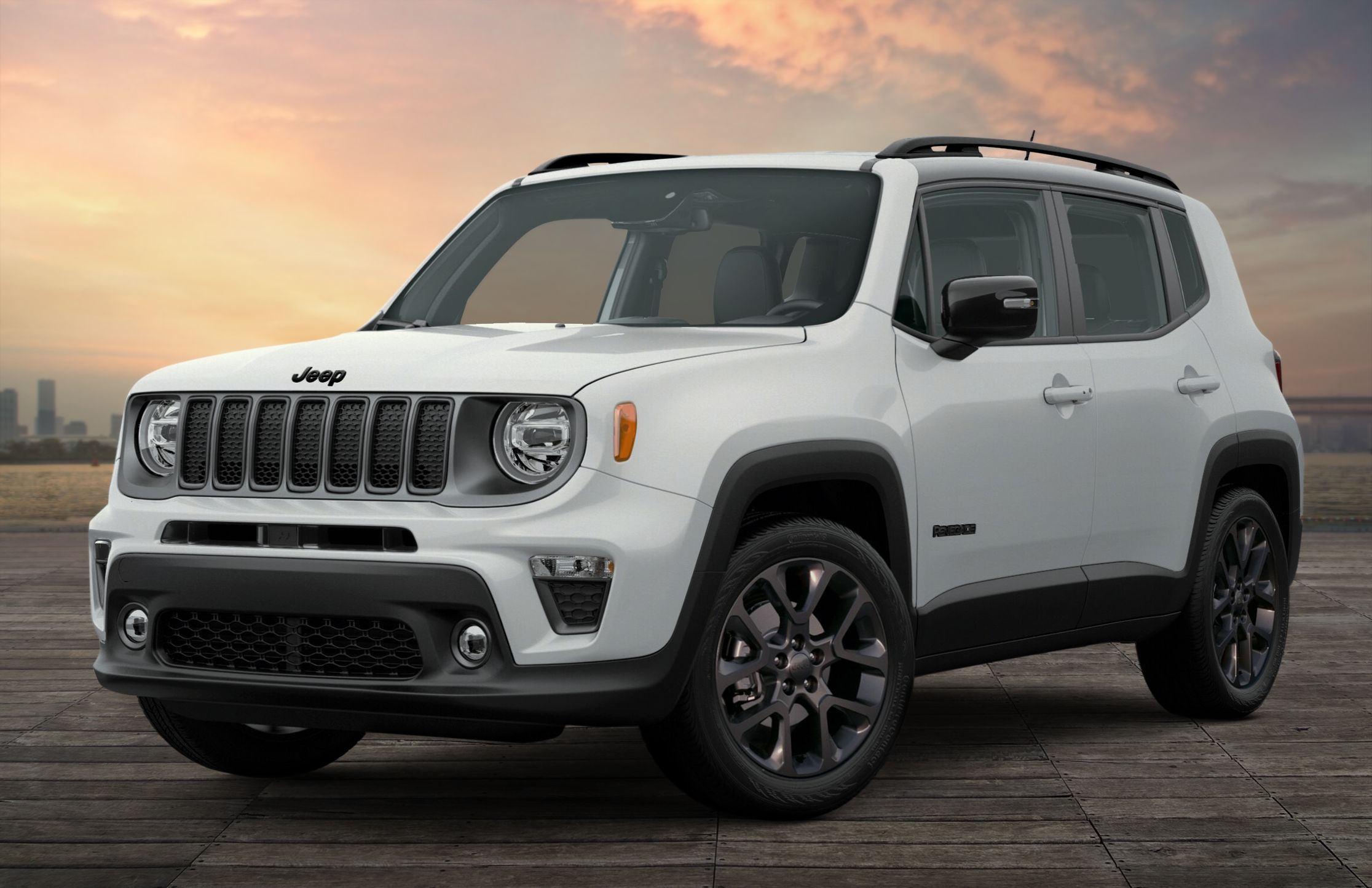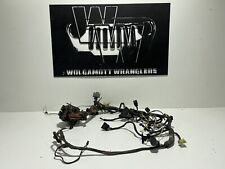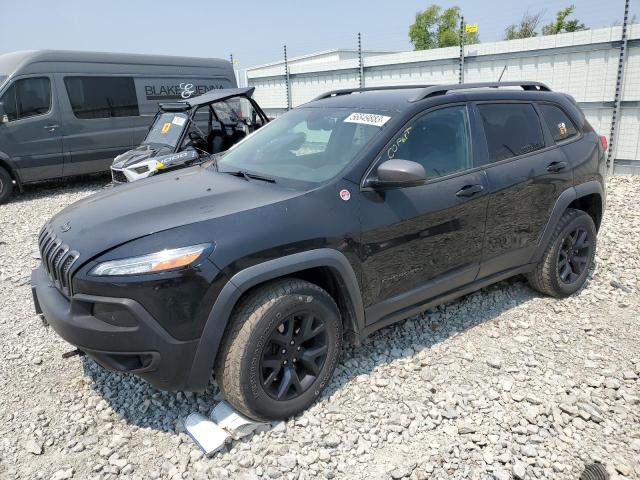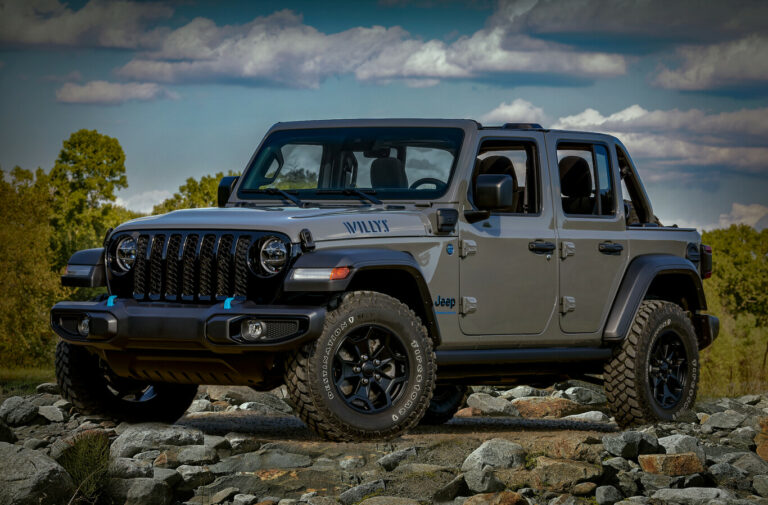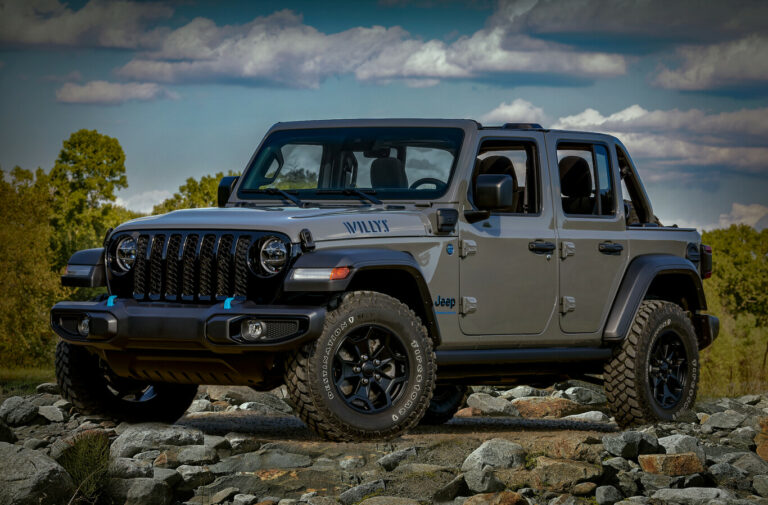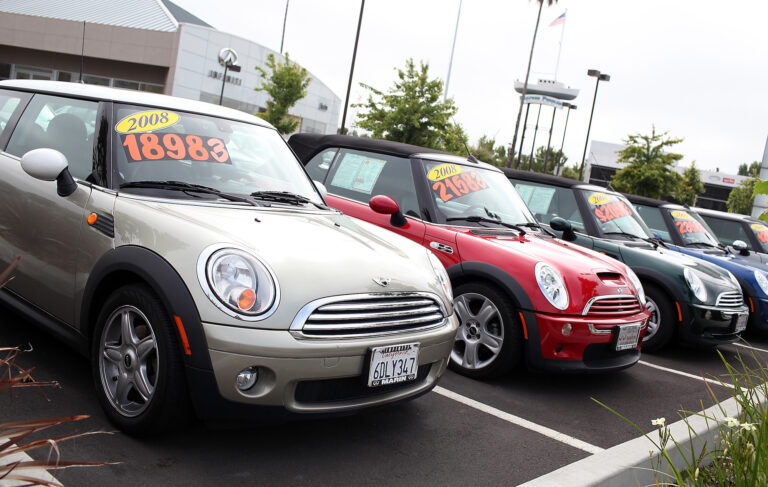Jeep Willys Wheels For Sale: A Comprehensive Guide to Finding Your Perfect Rollers
Jeep Willys Wheels For Sale: A Comprehensive Guide to Finding Your Perfect Rollers jeeps.truckstrend.com
The iconic Jeep Willys, a symbol of rugged American ingenuity and wartime resilience, continues to captpture the hearts of enthusiasts worldwide. Whether you’re embarking on a meticulous restoration, seeking to enhance your classic’s off-road prowess, or simply aiming to complete its authentic aesthetic, the wheels play a pivotal role. Finding the right Jeep Willys wheels for sale is not just about acquiring four round pieces of metal; it’s about connecting with history, ensuring authenticity, and guaranteeing performance. This comprehensive guide delves deep into the world of Willys wheels, offering insights, advice, and practical steps to help you navigate the market and make an informed purchase.
The Iconic Roll of Willys Wheels: An Introduction
Jeep Willys Wheels For Sale: A Comprehensive Guide to Finding Your Perfect Rollers
When one pictures a vintage Jeep Willys, whether it’s an MB, CJ-2A, or M38, an unmistakable image comes to mind: its distinctive, robust wheels. These wheels are more than just functional components; they are integral to the vehicle’s legendary silhouette and rugged character. The demand for Jeep Willys wheels for sale stems from a vibrant community of restorers, collectors, and off-roaders who understand that the correct wheels are paramount for historical accuracy, safe operation, and achieving that timeless look. This guide is your definitive resource, designed to equip you with the knowledge needed to confidently explore the market, identify genuine options, and secure the perfect set of wheels for your cherished Willys.
A Glimpse into History: The Legacy of Willys-Overland Wheels
The story of Willys wheels is intertwined with the very birth of the Jeep. Initially designed for military applications, the early Willys MB and Ford GPW models utilized robust, simple steel wheels built to withstand the harshest combat conditions. These were typically 16-inch diameter, 4.5-inch wide (later 5-inch wide), with a distinctive 5×5.5-inch bolt pattern. Post-war, as the Civilian Jeep (CJ) series evolved, the wheel designs largely carried over, maintaining their utilitarian aesthetic and legendary durability.
The iconic "solid disc" or "stamped steel" wheel became synonymous with the Willys name. Later variations included "combat wheels" or "split rims," particularly on military variants like the M38 and M38A1, which allowed for easier tire changes in the field. Understanding this historical context is crucial when searching for Jeep Willys wheels for sale, as it helps differentiate between original designs, later iterations, and modern reproductions, each with its own place in the Willys lineage.
Decoding Willys Wheels: Types, Sizes, and Specifications
Navigating the market for Jeep Willys wheels for sale requires a basic understanding of their key specifications. While the iconic 5×5.5-inch bolt pattern remained consistent across most Willys models, variations in diameter and style exist:
- Diameter: The most common sizes are 16-inch and 15-inch. Early military (MB, GPW) and civilian (CJ-2A, early CJ-3A) models primarily used 16-inch wheels. Later civilian models (late CJ-3A, CJ-3B, CJ-5) often used 15-inch wheels, accommodating a wider range of tires.
- Width: Original widths typically ranged from 4.5 inches to 5.5 inches. Wider wheels are sometimes found in aftermarket or reproduction form to allow for larger tires.
- Bolt Pattern: The universal 5×5.5-inch (5 on 5.5") bolt pattern is a defining characteristic of Willys wheels. This refers to 5 lug holes spaced on a 5.5-inch diameter circle.
- Style:
- Solid Disc/Stamped Steel: The most recognizable and prevalent type, featuring a simple, durable steel design. These are highly sought after for authentic restorations.
- Combat Wheels/Split Rims: Primarily found on military Jeeps (M38, M38A1), these wheels consist of two or more pieces bolted together, designed for easy tire bead breaking in remote locations. Caution: Split rims require specialized knowledge and equipment for safe tire mounting and should only be handled by experienced professionals due to explosion risk if improperly assembled.
- Aftermarket/Reproduction: Modern reproductions are typically steel and mimic the original stamped steel design, often available in both 15-inch and 16-inch diameters. Some alloy wheels are also produced in the 5×5.5 pattern, offering a different aesthetic and lighter weight, though not historically accurate for purist restorations.

The Quest for Authenticity: Original vs. Reproduction Wheels
When looking for Jeep Willys wheels for sale, you’ll primarily encounter two categories: original vintage wheels and modern reproductions. Each has its advantages and disadvantages:
- Original Vintage Wheels:
- Pros: Unparalleled authenticity, historical value, original patina (if desired). Essential for concourse-level restorations.
- Cons: Can be challenging to find in good condition (rust, dents, trueness issues), may require extensive refurbishment, often higher cost, and potential safety concerns with very old or damaged units (especially split rims).
- Reproduction Wheels:
- Pros: Brand new condition, consistent quality, readily available, often more affordable, no hidden damage or rust, safer (modern manufacturing standards, no split rim design).
- Cons: Lack the historical "soul" of originals, may not be 100% accurate in every detail for the most fastidious restorers.
Your choice depends on your budget, restoration goals (e.g., driver, show vehicle, off-roader), and personal preference for authenticity versus practicality. Many opt for reproductions for daily drivers or mild restorations, reserving originals for high-end projects.
Where to Find Your Wheels: A Comprehensive Sourcing Guide
The search for Jeep Willys wheels for sale can take you to various corners of the market:
- Online Marketplaces:
- eBay: A vast resource for both original and reproduction wheels. Use specific search terms like "Willys 16-inch wheels," "CJ-2A wheels," or "M38 wheels." Always check seller ratings and ask for detailed photos.
- Craigslist/Facebook Marketplace: Excellent for local finds, potentially saving on shipping. Be prepared to inspect in person. Search within specific regions.
- Dedicated Forums & Social Media Groups: Online communities for Willys Jeep enthusiasts are invaluable. Members often buy, sell, and trade parts, and you can tap into collective knowledge. Look for groups on Facebook or dedicated Willys forums.
- Specialized Vintage Jeep Parts Dealers: Companies that specialize in vintage Jeep parts are a reliable source for both NOS (New Old Stock) originals and high-quality reproductions. They often offer restored wheels or new powder-coated options. Examples include Omix-ADA, Walck’s 4WD, Kaiser Willys Auto Parts, and Quadratec (for newer reproductions).
- Swap Meets & Auto Shows: Large vintage military vehicle shows, Jeep Jamborees, and classic car swap meets are treasure troves. You can inspect wheels firsthand, haggle prices, and connect with other enthusiasts.
- Salvage Yards/Farm Sales: Less common but possible to find original wheels on derelict Jeeps or farm equipment. Requires patience and luck.
- Restoration Shops: If you’re having your Willys restored professionally, your chosen shop may have a network for sourcing authentic wheels or can recommend suppliers.
Critical Considerations Before You Buy: A Buyer’s Checklist
Before committing to Jeep Willys wheels for sale, thorough due diligence is essential:
- Condition Assessment:
- Rust: Surface rust is common and treatable; deep, pitting rust that compromises structural integrity is a red flag.
- Dents/Bends: Check for flat spots, bends, or severe dents on the rim or center. These can affect tire seating and wheel balance.
- Cracks: Absolutely avoid any wheels with cracks, especially near lug holes or the bead seat.
- Trueness: If possible, spin the wheel to check for wobbles or excessive runout. A professional can assess this.
- Authenticity Verification: If buying originals, look for original markings, date stamps (if applicable), and specific design characteristics of the era. Consult Willys parts manuals or enthusiast guides.
- Safety (Especially for Split Rims): Reiterate the extreme caution needed with split rims. If you’re not an expert, opt for solid disc wheels or professional handling.
- Compatibility: Double-check the diameter (15" or 16") and bolt pattern (5×5.5"). Consider backspacing if you’re using larger tires or custom setups.
- Budget: Set a realistic budget. Original, unrestored wheels can range from $50-$200 each depending on condition, while professionally restored or new reproductions can be $150-$300+ per wheel.
- Shipping Costs: Wheels are heavy and bulky. Factor in shipping costs, especially for long distances. Local pickup is often ideal.
- Seller Reputation: Buy from reputable dealers or sellers with positive feedback. Ask for multiple clear, high-resolution photos from different angles. Don’t hesitate to ask specific questions about condition and history.
Bringing Them Back to Life: Restoration and Refurbishment
Once you’ve acquired your Jeep Willys wheels for sale, you might need to restore them. The process typically involves:
- Cleaning: Remove dirt, grease, and loose rust.
- Inspection: A final, thorough inspection for hidden damage.
- Stripping: Sandblasting or chemical stripping to remove old paint and rust down to bare metal. This is crucial for proper adhesion of new coatings.
- Repair (if needed): Minor dents can be hammered out; major damage usually means the wheel is scrap.
- Priming: Apply a high-quality epoxy primer for corrosion resistance.
- Painting/Powder Coating:
- Paint: Use automotive-grade paint. Willys wheels were originally painted in body color or a contrasting color (e.g., black or olive drab).
- Powder Coating: A more durable and chip-resistant finish, ideal for wheels that will see off-road use or regular exposure. Offers excellent protection against rust.
- Tire Mounting: Always use a reputable tire shop, especially for vintage wheels, to ensure proper mounting and balancing.
Installation, Maintenance, and Longevity: Keeping Your Wheels Rolling
Proper installation and ongoing maintenance are key to the longevity and safe operation of your newly acquired Jeep Willys wheels for sale:
- Lug Nut Torque: Always torque lug nuts to factory specifications using a torque wrench. Under-torquing can lead to loose wheels; over-torquing can strip studs or damage wheels.
- Regular Inspection: Periodically check your wheels for signs of damage, loose lug nuts, or unusual wear patterns on tires, which might indicate a balance issue.
- Cleaning: Keep your wheels clean to prevent rust and corrosion, especially after off-road excursions.
- Tire Rotation: Regular tire rotation helps ensure even wear across all four tires and prolongs their lifespan.
Navigating Challenges: Solutions for Common Issues
The journey to find the perfect Jeep Willys wheels for sale isn’t always smooth. Here are some common challenges and their solutions:
- Scarcity of Specific Types: Finding pristine original 16-inch combat wheels, for instance, can be tough.
- Solution: Broaden your search to reproduction options, or consider having a less-than-perfect original professionally restored. Network within enthusiast communities.
- Damaged or Unusable Wheels: You might find a good deal on a wheel, only to discover it’s bent or cracked.
- Solution: Always insist on detailed photos and ask direct questions about structural integrity before purchase. If buying in person, inspect thoroughly. Factor in repair costs if minor, or walk away if major.
- High Shipping Costs: Heavy wheels mean expensive shipping.
- Solution: Prioritize local pickups via Craigslist or Facebook Marketplace. Inquire about freight shipping for multiple wheels, which can sometimes be more cost-effective than individual parcel shipping.
- Identifying Fakes/Inaccurate Reproductions: Some reproductions may not be historically accurate in every detail.
- Solution: Research original wheel characteristics thoroughly. Purchase from reputable dealers known for accuracy.
Price Table for Jeep Willys Wheels For Sale
| Wheel Type / Condition | Description | Approximate Price Range (Per Wheel) | Notes |
|---|---|---|---|
| Original Willys Steel Wheels (Unrestored) | |||
| 16-inch (MB/CJ-2A) | Surface rust, minor dents, straight but needs restoration. | $50 – $150 | Condition varies wildly. Ideal for DIY restoration projects. Inspect carefully for deep rust or major bends. |
| 15-inch (CJ-3A/CJ-3B/CJ-5) | Surface rust, minor dents, straight but needs restoration. | $40 – $120 | Similar condition notes as 16-inch. Often more common due to longer production run. |
| Original Willys Steel Wheels (Restored) | |||
| 16-inch (MB/CJ-2A) | Sandblasted, primed, painted/powder coated, straightened, ready for tire. | $150 – $300 | Professionally restored. Price depends on quality of restoration and whether original markings are preserved. |
| 15-inch (CJ-3A/CJ-3B/CJ-5) | Sandblasted, primed, painted/powder coated, straightened, ready for tire. | $120 – $250 | Ready to install. Good option if you lack restoration skills/equipment. |
| Original Willys Combat Wheels (Split Rims) | |||
| 16-inch (M38/M38A1) | Unrestored, may have rust/dents. | $75 – $200 | Requires expert handling for safety. Condition of locking rings and hardware is crucial. |
| 16-inch (M38/M38A1) | Restored, primed, painted, checked for integrity. | $200 – $400 | Professionally restored and checked. Still requires professional tire mounting. |
| Reproduction Steel Wheels (New) | |||
| 16-inch (MB/CJ-2A Style) | Brand new, unpainted or primed, accurate replica. | $100 – $180 | Excellent for accurate restorations without the hassle of vintage wheel restoration. |
| 15-inch (CJ-3A/CJ-3B Style) | Brand new, unpainted or primed, accurate replica. | $90 – $160 | Most common reproduction. Ideal for drivers or less stringent restorations. |
| Aftermarket Alloy Wheels (New, 5×5.5) | |||
| 15-inch / 16-inch | Modern alloy wheels with Willys bolt pattern. | $120 – $250+ | Not historically accurate, but offer modern styling, lighter weight, and often wider sizes. For custom builds or modern performance. |
Note: Prices are approximate and can vary significantly based on rarity, seller, location, market demand, and the specific condition or brand of reproduction. Always verify current prices and condition with the seller.
Frequently Asked Questions (FAQ) about Jeep Willys Wheels For Sale
Q1: What bolt pattern do all Willys Jeeps use?
A1: Most Willys Jeeps (MB, GPW, CJ-2A, CJ-3A, CJ-3B, CJ-5, M38, M38A1) use a 5×5.5-inch (5 on 5.5") bolt pattern. This is a crucial specification to remember when searching for wheels.
Q2: Are Willys split rims safe to use?
A2: Willys split rims (combat wheels) can be safe if they are in excellent condition, properly assembled, and handled only by experienced professionals using the correct tools and safety precautions. They pose a significant explosion risk if improperly handled due to the high air pressure. Many enthusiasts opt for solid disc wheels for safety and convenience.
Q3: Can I put modern radial tires on old Willys wheels?
A3: Yes, generally, you can mount modern radial tires on original Willys steel wheels, provided the wheel is true, rust-free, and in good structural condition. However, it’s always best to have a professional tire shop inspect the wheels and mount the tires. Some very old wheels might not be designed for the bead seat of modern tubeless radials, requiring tubes.
Q4: How do I tell if a Willys wheel is original or a reproduction?
A4: Original wheels often have manufacturer stamps (e.g., Kelsey-Hayes, Ford) and specific date codes or part numbers stamped into the steel, often near the lug holes or valve stem. Reproductions usually lack these specific vintage markings or have modern branding. Consulting Willys parts manuals can help identify correct original characteristics.
Q5: What’s the difference between 15-inch and 16-inch Willys wheels?
A5: The main difference is the diameter, which dictates the tire size that can be mounted. 16-inch wheels were standard on early military (MB, GPW) and civilian (CJ-2A, early CJ-3A) models, offering a taller sidewall for off-road performance. 15-inch wheels became more common on later civilian models (late CJ-3A, CJ-3B, CJ-5) as tire options expanded. The choice depends on historical accuracy goals and desired tire availability.
Q6: Should I paint or powder coat my Willys wheels during restoration?
A6: Both options are viable. Painting offers a historically accurate finish and is easier for DIY enthusiasts. Powder coating provides a much more durable, chip-resistant finish that stands up well to off-road use and weather, though it typically requires professional application.
Conclusion: Rolling Towards Willys Perfection
The journey to find the perfect Jeep Willys wheels for sale is a rewarding part of owning and maintaining these iconic vehicles. Whether you’re chasing historical accuracy with a set of original, restored steel wheels or opting for the reliability and ease of modern reproductions, the right choice will significantly impact your Willys’ appearance, performance, and overall character. By understanding the historical context, decoding specifications, exploring sourcing options, and diligently applying a buyer’s checklist, you can confidently navigate the market. With the right wheels, your beloved Willys will not only look the part but also be ready to conquer any trail, proudly rolling on a piece of automotive history.
